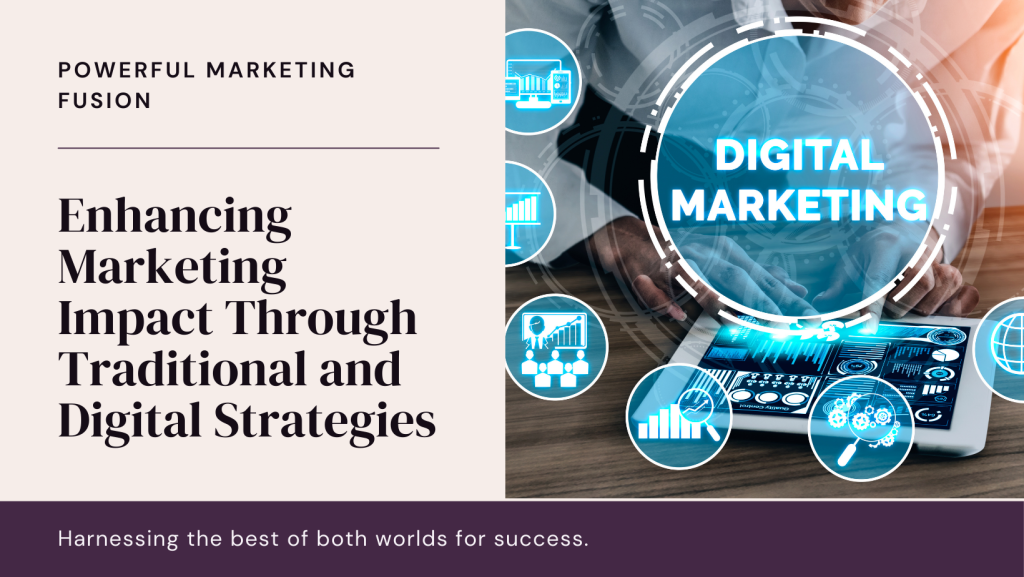In today’s marketing landscape, integrating traditional and digital strategies can amplify a brand’s reach and effectiveness, leveraging the strengths of each approach to achieve overarching marketing objectives.
Traditional marketing tactics such as print ads, radio spots, and TV commercials continue to play a role in reaching broad audiences and building brand awareness. These channels are particularly effective for reaching older demographics or niche markets where digital adoption may be lower.
However, digital marketing offers unparalleled targeting capabilities and measurable results. Platforms like social media, search engines, and email marketing allow brands to reach highly segmented audiences with personalized messaging, track campaign performance in real time, and optimize strategies based on data-driven insights.
Successful integration of traditional and digital marketing involves aligning messaging and brand consistency across all channels. By ensuring that messages resonate across print, digital, and in-person interactions, brands can reinforce key brand attributes and create a unified brand experience for consumers.
Moreover, leveraging digital tools to enhance traditional marketing efforts can maximize impact. For example, QR codes on print materials can drive users to digital experiences or landing pages, bridging the gap between offline and online interactions and enabling measurable engagement.
Case studies like Dove’s “Real Beauty” campaign demonstrate the power of integrating traditional and digital strategies. Through TV commercials and print ads, Dove sparked conversations about body positivity and self-esteem, while digital platforms amplified the campaign’s reach and encouraged consumer participation.
In conclusion, integrating traditional and digital marketing strategies allows brands to leverage the strengths of each approach while creating cohesive, omnichannel experiences for consumers. By blending offline and online tactics strategically, brands can maximize their marketing impact and achieve sustainable growth in competitive markets.


